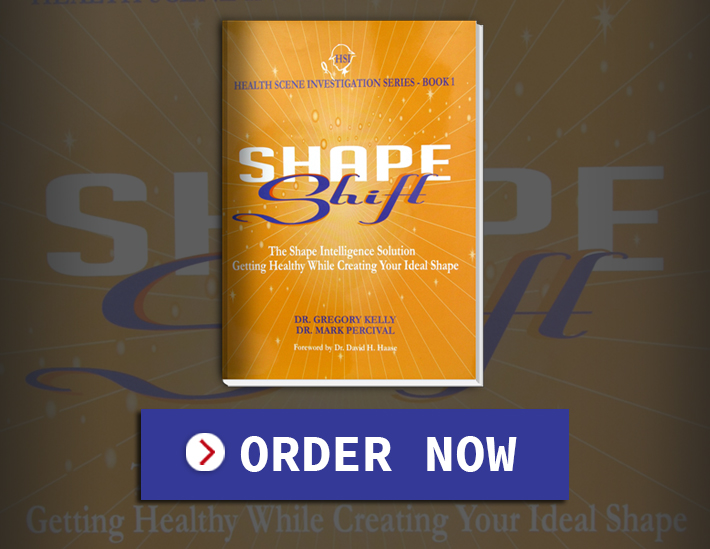
Jump Rope: A Great Way to Get Fit
Rope jumping is one of the most underrated forms of exercise, but it is a great way to get fit. With the convenience of a jump rope, you can get your heart rate up and work your whole body from the comfort of your own home. Read on to learn more about why this classic exercise is perfect for getting fit and staying healthy.
List of Content
- 1. What’s So Great About Jump Roping?
- 2. The Benefits of Jump Roping for Fitness
- 3. Easy Equipment to Get Started Jump Roping
- 4. Tips for Beginner Jump Ropers
- 5. Staying Motivated to Jump Rope
- 6. How to Make Jump Rope Part of Your Fitness Routine
- You Ask, I answer

1. What’s So Great About Jump Roping?
Jump roping is a great way to get a full-body workout while having fun. It provides both an aerobic and anaerobic exercise to improve your overall physical health. Here are some of the reasons why jump roping is a great form of exercise:
- It’s Affordable: All you really need to get started jump roping is a jump rope, and these usually don’t cost too much. You can often find jump ropes for as little as a few dollars, so no matter your budget, you can get in on the action!
- It’s Easy to Learn: Unlike some other forms of exercise, jump roping is something anyone can learn relatively quickly. With a few days of practice, you can learn the basics and then master more advanced techniques as you go.
- It Burns Calories: Jump roping is an intense form of exercise and a great way to burn calories quickly. The American Council on Exercise states that just 10 minutes of jump roping can burn off the same amount of calories as a 30-minute run.
- It’s Portable: Unlike a treadmill or other pieces of workout equipment, a jump rope is small and light enough to take anywhere. It’s perfect for when you’re traveling and don’t have access to a gym, or if you just want to get some exercise outdoors.
Overall, jump roping is a great way to stay active and have fun. It’s an affordable and easy form of exercise that can be done almost anywhere, and it’s an excellent way to burn calories and improve your physical health.

2. The Benefits of Jump Roping for Fitness
Jump roping is an incredibly effective and affordable way of getting fit. With just an inexpensive jump rope, you can work out at home or in the park without needing to sign up for an expensive gym membership.
- Burns Calories: Jumping rope helps burn up to 13 calories per minute while providing an intense cardio workout. This makes it a much more effective exercise than walking, jogging or running.
- Full-Body Exercise: Jumping rope requires coordination and agility, involving your core, legs, arms, shoulders, and back. Other exercises may target certain muscle groups, but jump rope works out your entire body at the same time.
- Convenient: Jump ropes are incredibly affordable and easy to transport. You can carry it in your bag and do a quick workout wherever you are, at any time of day.
It improves balance and coordination, builds stamina, and helps you increase your speed, power, and athleticism. It’s also proven to improve cardiovascular endurance, lower cholesterol levels, reduce body fat, and improve muscle tone.
Jump roping is a great way to boost your fitness level, get healthier, and have fun at the same time!
3. Easy Equipment to Get Started Jump Roping
Jump roping is a great cardio workout that’s suitable for all ages and fitness levels. You don’t need to be a professional to start, and all you really need is a jump rope. But what type of jump rope should you buy? Here are 3 of the most popular equipment for getting started.
Speed Rope
- Made with lightweight material like metal, PVC, or leather
- Ideal for fast and high intensity workouts
- Good for experienced jump rope users or athletes
Beaded Rope
- Made from a long string of durable plastic beads
- Great for beginners and children
- Can help develop balance and coordination
Licorice Rope
- Made from one continuous piece of leather
- Ideal for intermediate jumpers
- Comes in differing weights and length
Getting started jump roping does not have to be expensive. You can grab any of these easy-to-use equipments and experience the benefits of jump roping today.
4. Tips for Beginner Jump Ropers
1. Learn the basics first: Before you dive into fancy tricks, learn the basics about jump rope: proper form for jumps, keeping your jump consistent, timing your feet, and building your speed.
There are plenty of tutorials and tutorials specific to beginner jump ropers available online. Find them and start to practice!
2. Have the right gear: Invest in a good set of jump ropes. Your length and type of rope will depend on your height. If you’re a beginner, start with a heavier rope as they are easier to control than a lightweight rope. Also, make sure your shoes are comfortable and lightweight.
3. Start with the basics: There are 3 basic jumps you need to master as a beginner: the basic jump, side-to-side jump, and criss cross jump. Once you have gotten comfortable with the basics, then you can start to attempt more complex tricks.
4. Establishing a routine: When you are getting started with jump rope, set a goal: something that you can easily stick to on a daily or weekly basis. Here are some ideas:
- Jumping for a set amount of time
- Jumping a certain number of jumps
- Adding a trick to your routine every week
- Progressing in your jump rope skills
Having a routine is important to help you keep motivated and progressing in a sport that can sometimes be challenging and difficult.
5. Staying Motivated to Jump Rope
1. Make a list
Making a list of the reasons why you want to jump rope can help you stay motivated and focused. It can also provide a big boost when you’re feeling down. Use the list to remind yourself why you’re doing it and why it’s important.
2. Set small goals
Set realistic goals that you can reach in the short-term and long-term. For example, if your goal is to jump rope 250 jumps in 10 minutes, start smaller like 25 jumps in one minute. Breaking up your goal into small achievable parts is a great way to stay motivated.
3. Get pumped up
Pump yourself up for a jump rope session. Listen to upbeat music that gets you ready for action. Visualize yourself succeeding at your goal. Get your friends involved to have some competition and fun. Some friendly competition and support can be a powerful way to stay motivated.
4. Celebrate success
Don’t forget to celebrate all successes, no matter how small. A high five or pat on the back can go a long way. Whether it’s reaching a new record, completing a challenging routine, or simply satisfying the task of getting out of bed, reward yourself with something that you enjoy. Doing this will reinforce positive behaviour and keep you motivated in the long run.
6. How to Make Jump Rope Part of Your Fitness Routine
1. Choose an Appropriate Rope
When getting started with jump rope, it is important to pick the right type of rope for your fitness routine. First, decide on a length. Choose a rope that is just long enough to lightly touch the ground when both handles are held in each hand. Heavy ropes with weighted handles may be better for experienced jumpers, while lightweight ropes with foam handles may be more appropriate for those just starting out.
2. Set Reasonable Goals
Once the right rope is chosen, it’s time to set goals. Start slowly and set a goal that is achievable within a few weeks. Aim for 10 minutes of jumping and, when comfortable, increase the time. As the time increases, aim for 100 skips within that 10 minutes. This provides an achievable goal that can be measured and will help you stay motivated.
3. Consider Jump Rope Variants
Once the basics of jumping rope have been mastered, it is time to try different variants. Some variants to consider include:
- Doubles – Where two jumps take place for every rope revolution.
- Criss- Cross – Where the rope passes through the legs in an ‘X’ shape for each jump.
- High Knees – Where the knees are brought up to waist height with each jump.
- Side Swing – Where the jump is performed in a sideways direction with the rope swinging over each shoulder in turn.
4. Incorporate Cardio Exercises
To build endurance and really make jump rope part of an intense workout, incorporate other cardio exercises. Interval training is a great way to do this; jump rope for 3 minutes, then take a rest for 1 minute. Start with 8 rounds of this exercise and gradually increase the little as your fitness improves. Adding other exercises such as burpees, sprints or cycling into your routine will also help keep you motivated and make your workouts more challenging.
You Ask, I answer
Q: What are the benefits of jump rope?
A: Jump rope is a great form of exercise that has numerous benefits. Not only does it improve your cardiovascular health, but it’s a great way to strengthen and tone your body too. It’s also an efficient form of burning calories, and helps to improve coordination, agility, and balance.
Q: What other types of exercises can jump rope be incorporated into?
A: Jump rope can be incorporated into numerous forms of exercise. It can be used as part of an interval training workout, as well as part of a bodyweight circuit. It can also be used to add intensity to a strength training routine, or even incorporated into Yoga practice.
Q: How often should I jump rope?
A: To get the most out of your jump rope workout, it’s recommended to jump rope for 20 minutes, three to four times a week. However, if you’re a beginner it’s best to start with 10 minutes, at whatever pace or intensity suits you, and slowly build up your time as your fitness improves.
Q: What type of jump rope do I need?
A: The type of jump rope you need depends on your individual needs. If you’re a beginner, then a lightweight, foam, or beaded rope would be best. For a more advanced workout, you may want to consider a heavier rope with wooden or metal handles.
In summary, jump rope is an amazing and easy way to get fit. It’s a great way to tone your body, improve your reflexes, and let out some of that energy! Plus, it’s cheap, accessible, and fun! So why not give it a try?

